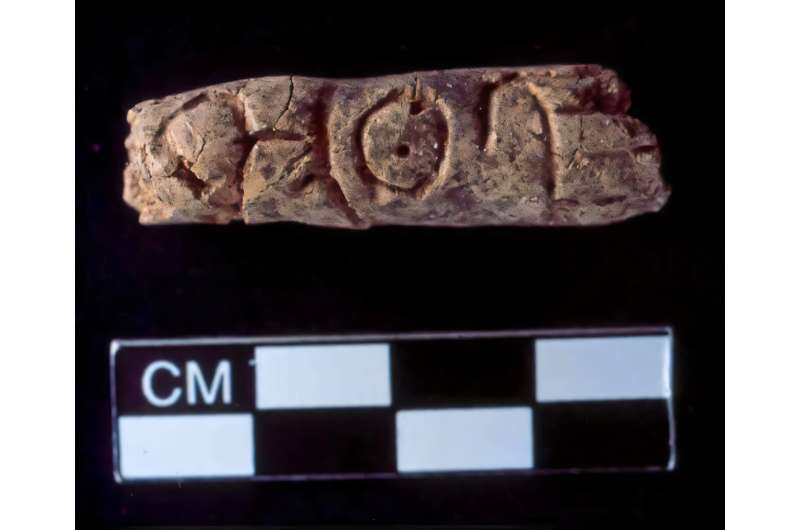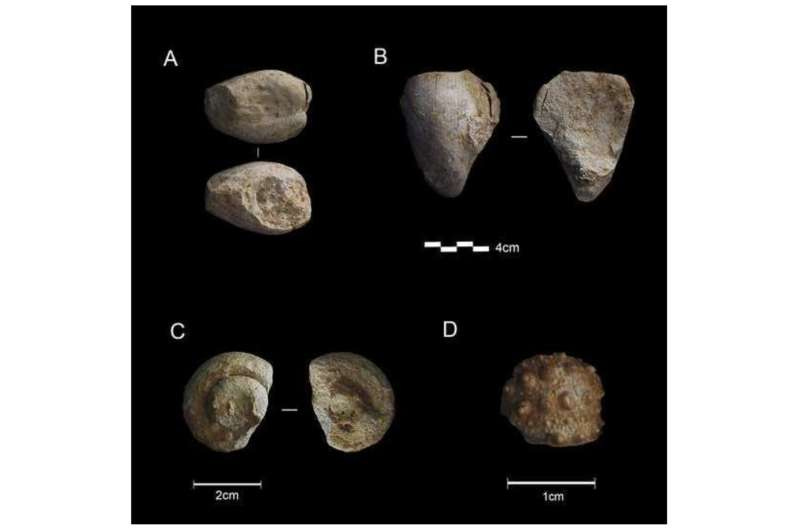🧐 Ancient Beat #135: Alphabets, psychoactive cocktails, and fossil collections (way before fossil collections were cool)
Hi folks! Welcome to issue #135 of Ancient Beat.
A couple of you have asked if I accept donations. I do. I just haven’t made it easy. So I’ll make it easy now. Here’s my Buy Me A Coffee link.
Not necessary. No pressure. I appreciate you all just for being here.
Here’s the latest ancient news. 👇
🗞 Ancient News: Top 5
Oldest Known Alphabet Unearthed in Ancient Syrian City — Archaeologists have discovered what may be the world's oldest known alphabetic writing in a tomb at Tell Umm-el Marra, Syria, dating back to around 2400 BCE. This predates previously known alphabetic scripts by approximately 500 years. The writing was found on four clay cylinders, each about the length of a finger, perforated as if to be strung together, possibly serving as labels. The tomb also contained six skeletons, gold and silver jewelry, cookware, a spearhead, and intact pottery vessels. The exact content of the inscriptions remains undeciphered, but this discovery suggests that the development of alphabetic writing may have occurred earlier and in different regions than previously thought, potentially reshaping our understanding of early communication technologies.
Fossil Collection Found in Neanderthal Cave Suggests Abstract Thinking — Archaeologists excavating the Prado Vargas Cave in Burgos, Spain, have unearthed 15 marine fossils dating back approximately 39,800 to 54,600 years. These fossils, including species like Tylostoma, Granocardium productum, and Pholadomya gigantea, measure under 2 inches and show no signs of utilitarian use. Their presence in the cave, far from their original geological context — some originating over 18 miles away — suggests that Neanderthals collected these items for aesthetic or symbolic purposes. This behavior indicates a level of abstract thinking previously attributed primarily to Homo sapiens. (Maybe it’s time to put those antiquated views of Neanderthals to bed? Just sayin…)
Study Confirms Egyptians Drank Hallucinogenic Cocktails in Ancient Rituals — Recent chemical analyses of a 2,000-year-old Egyptian mug, adorned with the image of the deity Bes, found residues of a potent concoction. This mixture included alcohol, honey, sesame seeds, pine nuts, licorice, grapes, and psychoactive plants, suggesting its use in rituals aimed at inducing visions and seeking divine protection. The presence of human bodily fluids, such as blood and saliva, indicates the beverage's role in fertility ceremonies. The purpose of these Bes-head mugs has been a mystery until now. Linked to childbirth and protection, they were likely central to reenactments of myths.
The Energy Revolution: How Humans Became Metabolic Outliers in Evolution — A recent study revealed that humans possess exceptionally high metabolic rates compared to other mammals, including primates. This unique energy expenditure has been pivotal in the evolution of larger brains, extended lifespans, and enhanced reproductive success. Unlike other species that balance energy between resting and activity, humans have elevated both resting and active metabolic rates. This adaptation, facilitated by efficient thermoregulation through sweating, allows sustained high-energy activities without compromising vital functions. Such metabolic flexibility has enabled humans to thrive in diverse environments and undertake complex tasks.
Two Newly Discovered Stone Circles on Dartmoor Boost 'Sacred Arc' Theory — Two Neolithic stone circles have been discovered on Dartmoor, supporting the theory of a "sacred arc" of monuments in the area. One circle, named the Metheral circle, consists of 20 stones, mostly fallen, and measures approximately 131 by 108 feet. It features an external bank, suggesting it may have functioned as a henge monument similar to an earlier phase of Stonehenge. The second circle, located slightly outside the arc, could have served as a gateway for pilgrims.
That’s it for the free Top 5! If you’re a free subscriber, sign up for the paid plan for another 22 discoveries and 8 recommended pieces of content covering the zodiac, Aztec death whistles, figs, and gladiators.
Until next time, thanks for joining me!
-James
Twitter: @jamesofthedrum
P.S. If you want access but it’s a little too steep for you right now, just email me — I want this to be accessible.
P.P.S. Paid members, read on!




